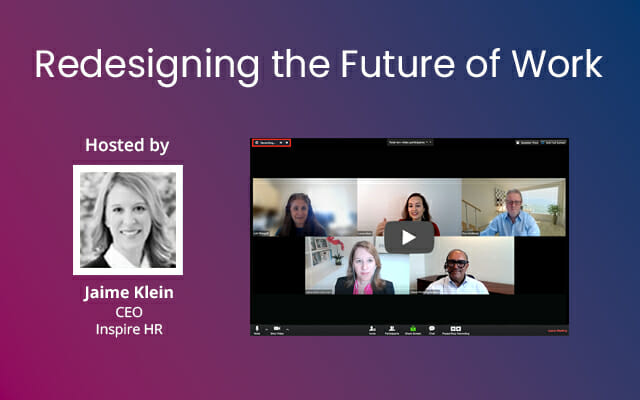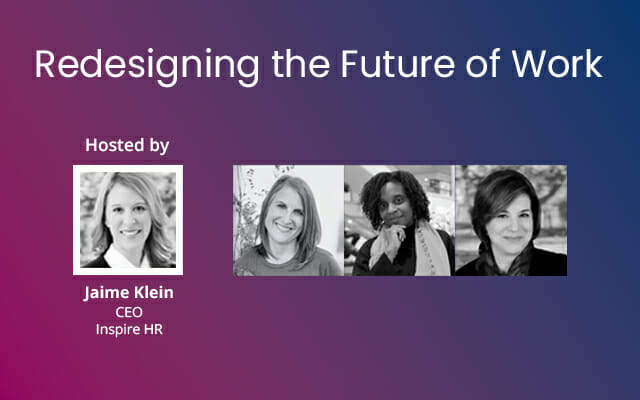
How to Cultivate a ‘Growth Mindset’ at Work
AUG 01, 2017
How to Cultivate a ‘Growth Mindset’ at Work
Are you born with it, or can you develop it? If your organization is like the majority of companies, the belief is that top talent was born with inherent intelligence, and are destined to excel simply because of their innate ability to produce results. But could that thought process be the very thing holding your organization back from the success it strives to achieve?
In the early 2000s, Carol Dweck published her book Mindset, to spark a change in how teachers and children approached learning and development. Today, her findings are used to evaluate learning in classrooms, athletic arenas, home, and the workplace. Dweck’s concept of fixed versus growth mindsets explains why it is crucial to believe more in your ability to improve over your natural abilities alone. Those with fixed mindsets rely heavily on natural talent and intellect and place a high value on these qualities in the workplace. This thought process focuses so much on delivering results that opportunities for learning, growth, and innovation are often missed. Those with growth mindsets believe that consistent effort and hard work develop intelligence and ability. They focus more on accepting challenges and view setbacks as opportunities to learn and improve. Just as an individual can have either a fixed or growth mindset, so can an organization. Dweck suggests that the mindset of a company shapes its culture. Those with a growth mindset tend to cultivate innovative environments and more fulfilled employees.
Dweck’s research has found that employees in growth mindset workplaces are:
- 65% likelier to say that the company supports risk-taking,
- 49% likelier to say that the company fosters innovation,
- 47% likelier to say that their colleagues are trustworthy, and
- 34% likelier to feel a strong sense of ownership and commitment to the company.
One of the most critical success factors that set apart static companies from those that are thriving is the organization’s leader. When profiled, the leaders all share some similarities — they aren’t geniuses, overly charismatic or egotistical – they are simply bold enough to face failure, curious enough to ask questions and courageous enough to accept the honest answers. Here are some companies that have committed to cultivating a growth mindset:
- Etsy uses learning and development as one of their investments in creating a growth mindset at work, as evidenced by the company’s weekly program, Edsy. Employees can practice their public speaking skills, and share information about the work they do across the organization during the weekly meetup. Employees are also supported in creating and leading “Etsy School” classes for colleagues.
- Google has never ranked employees as part of their review process, nor does it stick to a strict annual timeline. Instead, their focus is on setting goals and motivating their talent to those goals, while looking at objectives and key results. Peer-to-peer feedback is also in place to rid the performance process of bias.
- Microsoft’s current CEO, Satya Nadella, redefined the company’s talent program with a program called Talent Talks. Through this initiative, senior leadership meet with the CEO each year to review employees and share ideas to increase skills and create learning experiences for them. This week-long process for the CEO is an invaluable investment — it provides a more effective way to identify and nurture new leaders, and creates growth opportunities for talent.
- Venrock, a NY-based venture capital firm, empowers employees to lead deals and make key decisions. This is based on their belief that exploring the unpopular often unveils great opportunities.
Inspire Human Resources consultant, Marianne Gattinella, has seen growth mindsets in action throughout her career at high-performance organizations. According to Marianne “the path forward (walk the talk) is quite simple through town hall events, staff meetings, skip-level sessions, and one/one discussions. However, it requires rigor and discipline when constantly reinforcing the message and a recognition that culture change takes time.” When Marianne consults with leadership, she emphasizes that “Human resources and other organizational processes need to be aligned to support a growth mindset. For example, a performance objective discussion more focused on the ‘how’ of a project rather than the ‘what’ of a result and a reward system that is more objective and qualitative based vs. objective and quantifiable.”
Here are some of my favorite tips to cultivate a growth mindset within your organization:
1. Start with self.
- Evaluate yourself for fixed mindset tendencies.
- Write out a plan to improve on them.
- Challenge yourself to seek out other opportunities for development.
2. Set the tone at the top.
- Top management must lead the charge for change.
- Purposely create learning opportunities and an environment that welcomes new ideas.
- Inspire employees by openly expressing your experiences with assessing and taking intelligent risks.
3. Get all hands on deck.
- Encourage employees to seek help from one another, try new approaches, and pool resources when possible.
- Allow for frequent, candid 360 feedback exchanges so that criticism becomes a regular and welcomed opportunity for improvement and further learning.
- Give employees the opportunity to participate in new projects or ventures based on their interest.
4. Hire from within.
- Shift the focus from pedigree to capabilities.
- Shape the firm’s employee review process to emphasize the importance of demonstrating growth, transformation, and a passion for improvement.
- Invest in the learning and development of your talent.
5. Measure by effort.
- Modify incentives to reward hard work, and a willingness to learn, over outcome.
- Allow employees to admit errors, and use these setbacks as a growth opportunity.
- Celebrate the successes of your team’s hard work, persistence, and dedicated efforts to keep them inspired.
In conclusion, shifting the mindsets of employees and organizations from fixed to growth increases achievement. First, identify your own potential fixed mindset tendencies, and then seek to identify fixed mindset tendencies within your organization. Use these findings to create opportunities to challenge your mindset and create a transformation. Continuous self-evaluation and the willingness to change is the key to true improvement, both individually and within a firm.
Need help cultivating a workplace that encourages a growth mindset? Do not hesitate to reach out at (917) 612-8571 or jaime@inspirehumanresources.com. We’re here to help!







